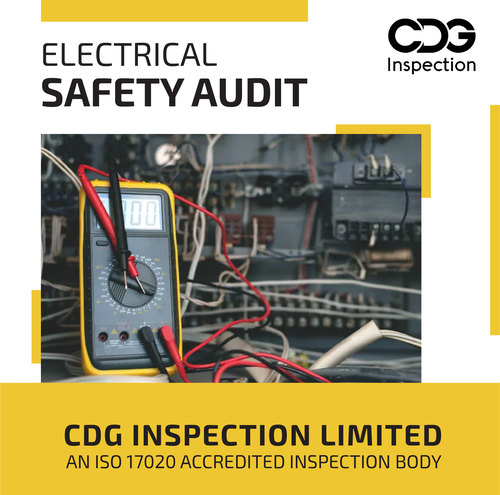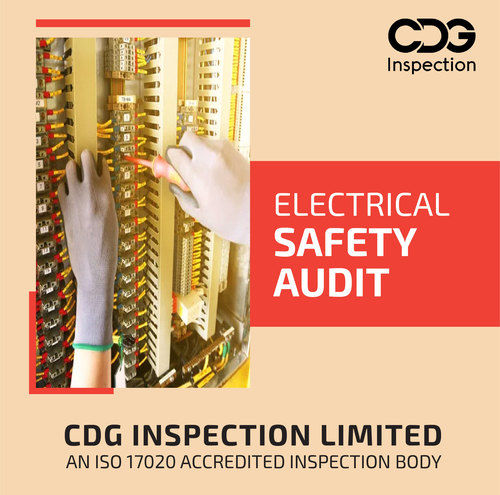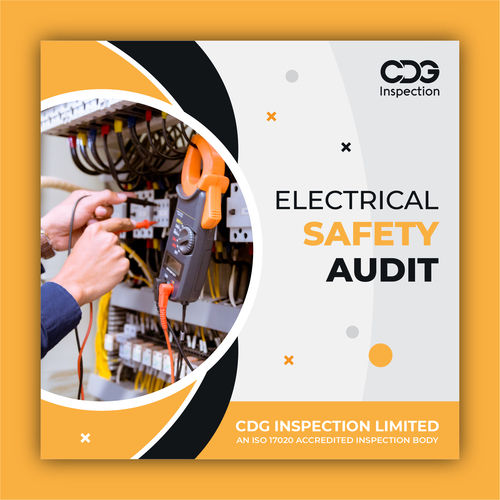Electrical safety audit in Alwar
Product Details:
Product Description
In process industries, fires due to electrical reasons are very probable, especially in industries that handle flammable chemicals. In service industries such as information technology, tele communications, banking and other commercial establishments, business interruption losses due to electrical hazards (fire in server room, damage of expensive communication equipment, loss of data, fire in cable gallery, etc.) could be substantial. An Electrical safety audit is the solution. Electrical Safety Audit Objectives, Ensure that safety effort is effective and meaningful, In short, An Electrical Safety Audit is a loss prevention program, prevent loss of productivity, property and prevent loss of life or prevent injuries. At CDG comprehensive Electrical Safety Audit is conducted by experienced electrical engineers who assist clients in reducing risk, make use of standard operating procedures of electrical equipment, and help to ensure compliance with applicable Safety Standards and Regulations. We often hear about electrical accidents in commercial buildings, industries, and other facilities that cause huge losses like equipment, infrastructure and even human lives. These accidents often result from faulty or unsafe electrical practices or unnoticed worn-out electrical systems. The severity of the accident is increased with the absence of proper safety equipment or techniques. To eliminate such instances and accidents a periodic and thorough examination of all electrical installations in such facilities is required. This is the main objective of Electrical safety auditing. An electrical safety auditing is a systematic enquiry, inspection, testing and verification of the electrical systems performed by experienced professionals to reduce the risk and ensure compliance with the safety standards and regulations of the government. Facilities for Electrical Safety Auditing, Industrial areas, factories etc, Commercial spaces, Electrical distribution houses, Hospitals, Institutions and organisations. Objectives of Electrical Safety Auditing, As mentioned above, the major aim of an electrical safety auditing is to identify and eliminate the potential electrical hazards and increase the safety of an industrial or commercial area or any such building. Other objectives include, Understanding the electrical performance and possible safety hazards in the system. Increase the safety of equipment and personnel. Improving the energy efficiency of the system and efficient use of resources. Improving the life of electrical equipment and installations. Identifying the possible improvements in safety techniques and practices. Checking compliance with safety standards and regulations. Scope of Electrical Safety Auditing, The main goal of electrical safety is electrical hazard identification and risk assessment, as mentioned above. Let us now look into this assessment in detail. Following are the ways in which the degree of safety is measured, and some recommendations to reduce or eliminate the dangers of electrical hazards in a facility. Check the earth resistance of earth pits and sockets. Review of electrical preventive maintenance program within the facility. Review the shutdown procedure, work permits, lock out tags etc. Review of earthing and lightning protection systems present in the factory, plant, facility to ensure human and equipment safety. Review electrical networks and systems within the facility, focusing on the adequacy and functionality of protection devices. Review of electrical documents like the register of electrical installations, single line diagrams, test records (transformer oil test, insulation resistance test, earth resistance test etc.) and data sheets of critical electrical installations. Checking the hotspots within the electrical installations and equipment using a thermal imager. Verification of proper warning signs and labelling of electrical panels, and other equipment. Review of fireside system protection. Review the records of coaching and competency of employees and contractors performing the trade. Review the records of employees associated with electrical safety, electrical hazard management at the workplace etc. Identify the training needs of personnel related to electrical safety.

Price:
- 50
- 100
- 200
- 250
- 500
- 1000+








